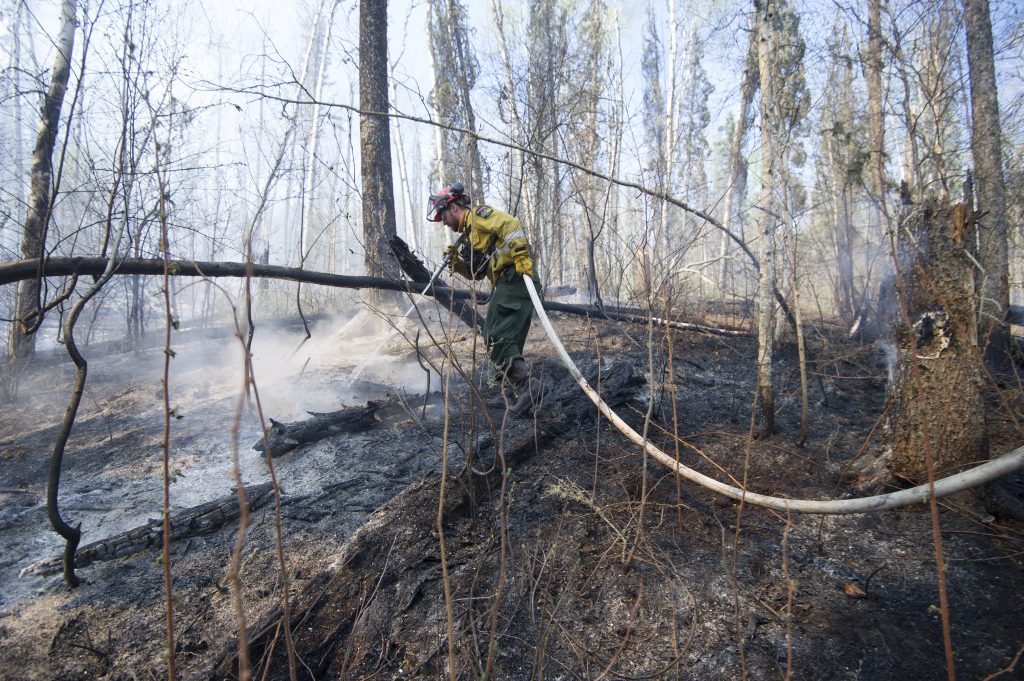By David Dodge and Scott Rollans
Mark Carney once famously called climate change the ‘tragedy of the horizon.’
In 2015, when Carney coined the phrase, the Canadian-born governor of the Bank of England was speaking to insurers at Lloyds of London. “The catastrophic impacts of climate change will be felt beyond the traditional horizons of most—imposing a cost on future generations that the current generation has no direct incentive to fix,” he said.
 “Eight of the ten warmest years on record in the UK have occurred since 2002,” said Carney. “Since the 1980s the number of registered weather-related loss events has tripled, and inflation-adjusted insurance losses from these events have increased from an annual average of around $10 billion in the 1980s to around $50 billion over the past decade.” (hear his 2015 speech)
“Eight of the ten warmest years on record in the UK have occurred since 2002,” said Carney. “Since the 1980s the number of registered weather-related loss events has tripled, and inflation-adjusted insurance losses from these events have increased from an annual average of around $10 billion in the 1980s to around $50 billion over the past decade.” (hear his 2015 speech)
The numbers are just as stunning in Canada, says David McGown of the Insurance Bureau of Canada. “In the 1980s Canadian insurers were paying out approximately 400 million dollars a year in climate-related costs. Those are insured costs for the physical damage associated with snow and hail and wind and flood. And over the past 10 years, that 400-million-dollar number has risen on average to one billion dollars a year.”

Convective Storm Events* in the U.S. 1980-2017
(Overall and insured losses) Source: © 20187 Munich Re, Geo Risks Research, NatCatSERVICE. As of January 2018.
Pace worsens in 2018
Judging by this year, the pace appears to be worsening geometrically. “So far in 2018 it’s not one billion dollars, but almost 1.8 billion dollars,” McGown says.
Hang on: the news gets even worse. Those insured costs represent only about half of the economic impact of climate-related events. The rest of the losses are borne by uninsured citizens, businesses, and nations.
Globally, that $50 billion annual figure cited by Carney has grown to nearly $60 billion.
Floods remain the biggest (and growing) risk for insurers. But, in 2018, tornadoes in Ottawa and severe windstorms in Southern Ontario have played an even bigger role in jacking up payouts within Canada.
Both the number and severity of extreme weather events have increased, says McGown. “One of the major reinsurers looks at the number of events that took place in the 1980s versus today. and believes that those numbers have at least doubled if not tripled in number.”
National economies impacted
Meanwhile, government-funded disaster relief is playing havoc with national economies, including America’s. “Over a 12 month period the federal disaster assistance dollars that Congress had to approve as a result of hurricanes Irma and Harvey again that hit Puerto Rico and the southern U.S. was again in the order of magnitude of $140 billion or roughly 10 percent of the total U.S. deficit for that year,” says McGown.
Though Canada is less threatened by hurricanes, our country faces many other climate-related disasters.

A member of Wildfire Management Alberta’s Wild Mountain Unit out of Hinton, hoses down hotspots in the Parsons Creek area of Fort McMurray Friday, May 5, 2016. Photo Chris Schwarz/Government of Alberta)
“The most expensive natural insured disaster in Canada were the wildfires in Fort McMurray, at about $3.7 billion,” McGown says. “Then, if you cast your mind back a little bit in time, the ice storms that affected eastern Canada Ontario and Quebec in the late 90s—that was a little bit more than a $2-billion-dollar event. The floods in southern Alberta in 2013 were about a $1.7-billion-dollar event.”
Alberta grapples with more than its share of natural disasters, observes McGown. “Out of the top ten costliest disasters in Canada, seven of them were Alberta-based.”
Yet somehow, society remains largely complacent despite the staggering economic impacts. Are we the proverbial frogs in boiling water, blissfully unaware while edging ever closer to financial disaster?
It is hard for politicians with short time horizons to muster the political and economic will to tackle climate change, but McGown says things are changing.“I think we’re at the point now where it’s becoming increasingly challenging for any elected official, whether municipal provincial or federal, to ignore the costs associated with severe weather across the country.”
Prevention versus adaptation to climate change
Action on climate change is typically divided into two categories: Mitigation, or actions that help reduce emissions and the future impacts of climate change; and Adaptation, investments in infrastructure to reduce the impacts of severe weather flooding, fires, and storms.
“When [insurers] think about how best to manage the risk that homeowners, businesses, and governments face, the quickest return on investment is an investment in adaptation,” says McGown.
McGown points to Winnipeg’s “Duff’s Ditch” as an example. Built in the 1960s to protect the city from Red River floods, the floodway more than proved its value during 1997’s “flood of the century.”
Edmonton is currently contemplating billions in expenditures to its stormwater system, and Oakville recently created a series of dams and channels to reduce future flood damage.

A permeable road surface for water management in Vitoria-Gasteiz, Spain. Photo David Dodge, GreenEnergyFutures.ca
There is also growing interest in green infrastructure, McGown says. “Natural infrastructures can be forests, they can be wetlands, or they can be open spaces. These help in the case of flooding, to absorb excess water and keep it away from those areas where citizens live.” For example, Green Energy Futures saw plenty of examples of this in Vitoria Gasteiz in Spain where they are retaining urban forests, building permeable roadways and very successfully help citizens shift from cars to walking, cycling and mass transit.
While insurers concern themselves mostly with adaptation, government-led mitigation strategies can help pave the way for a less carbon-intensive economy. “Proposals—whether they’re regulatory or fiscal—that change business or consumer demand for carbon would be a mitigating investment,” says McGown.
And there are municipalities tackling mitigation, such as Vancouver’s Greenest City Action Plan and Edmonton’s Energy Transition Strategy and its amazing Change for Climate campaign including the award-winning Renewable video series.
There is also a growing body of climate resilience building advice to make buildings more severe weather resistant such as this one on wind and hurricane preparedness.
Actions speak louder than words.

Risky Business: Insurance and Climate Change GALLERY


